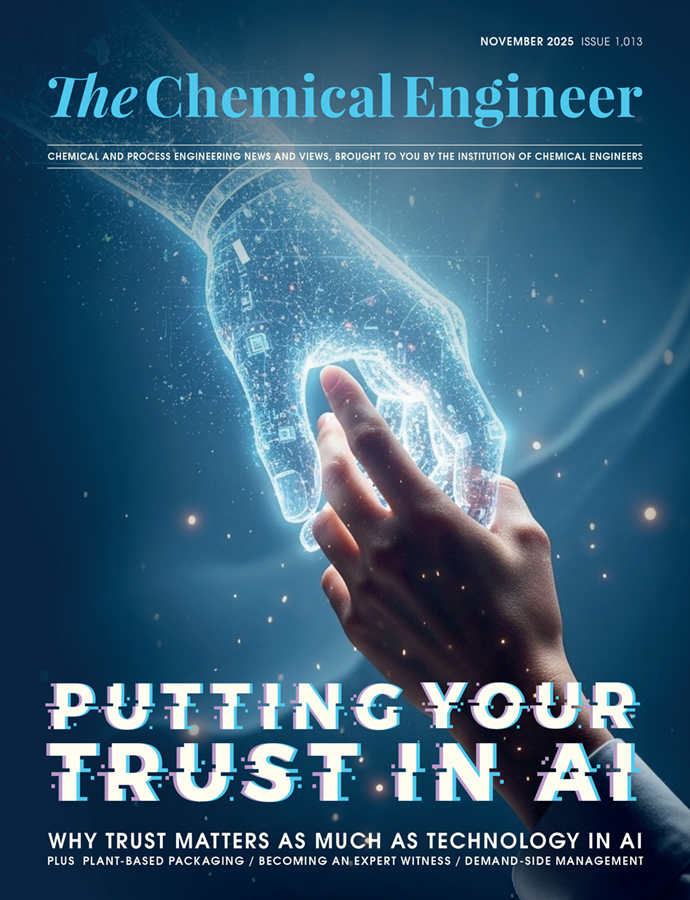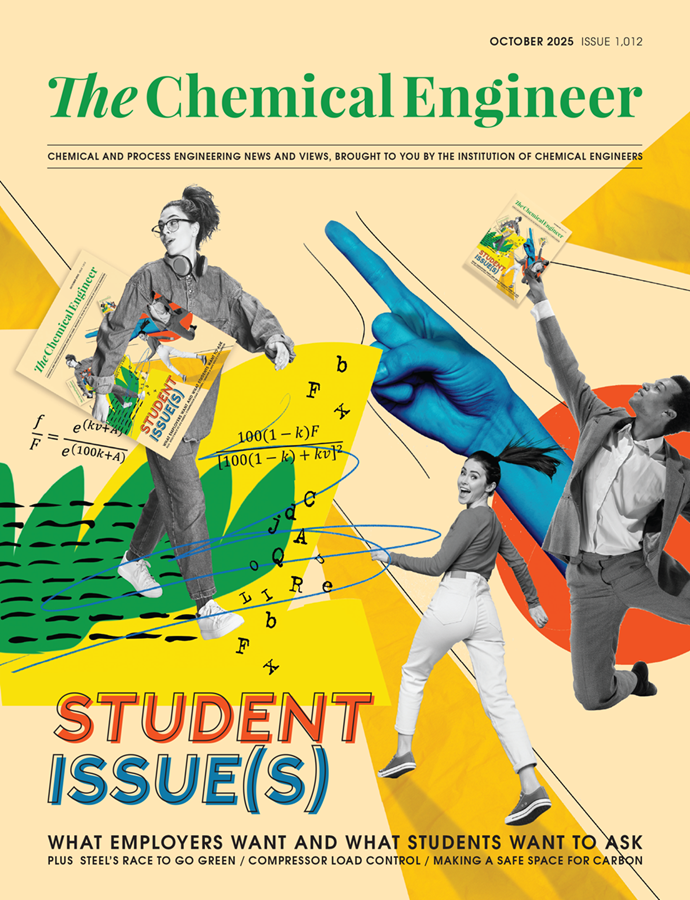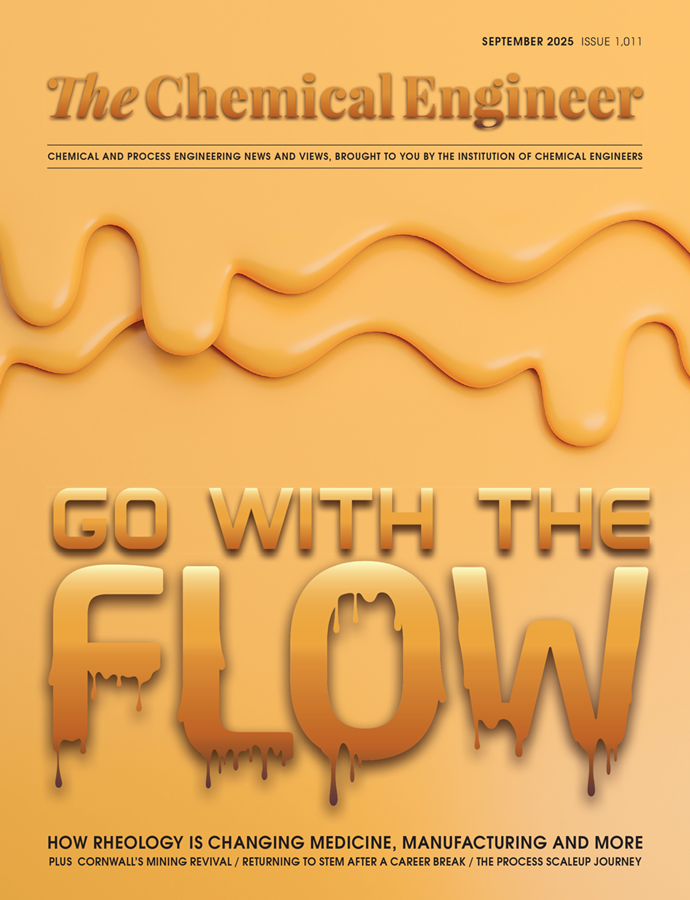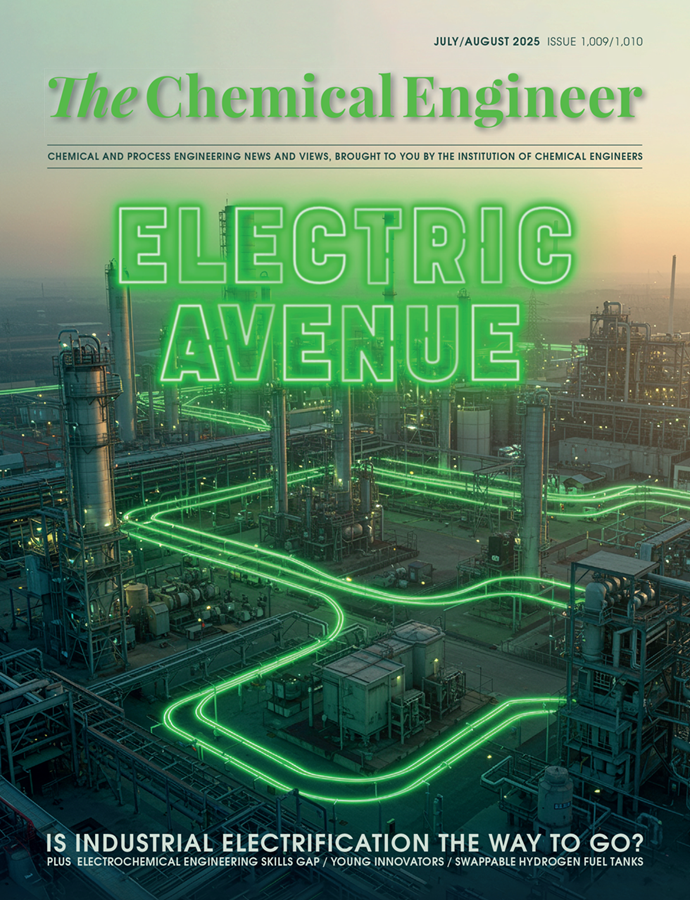Steel’s New Chapter in the Race to Go Green
As blast furnaces fall silent, new technologies promise a greener future for steel. But as Sam Baker reports, the challenge is as much about people and places as it is about engineering
THE URGENCY around green steel in the UK intensified in April when British Steel’s Scunthorpe blast furnaces faced a sudden shutdown. Supplies of coke and iron ore – essential raw materials for virgin iron production – had run critically low. Amid accusations that Chinese owner Jingye deliberately withheld feedstock to force the closure of the unprofitable Scunthorpe plant, the UK government stepped in and seized operational control. While long-term plans for the steelworks remain uncertain, the government insists it will eventually transition to cleaner production.1 That pledge has left engineers scratching their heads: how can one of the modern world’s most entrenched and carbon-intensive industries possibly reach net zero?
Out with the old
The coastal town of Port Talbot in south Wales is another of the many communities like Scunthorpe whose long history of iron and steelmaking has been in decline over the last 40 years. In the 13th century, Cistercian monks smelted iron ore in the hills above where the town now sits. The first modern steelworks went up in 1902, and by 1967, when the site was taken over by the then state-owned British Steel, it was one of the biggest steelworks in Europe, employing 18,000 people across its three steel plants, two blast furnaces and 84 coke ovens. Fast forward to today and Port Talbot has become a vast decommissioning site. The shutdown of its two blast furnaces in 2024 led to 400 compulsory redundancies and a further 2,100 voluntary departures.
In place of the blast furnaces, owner Tata Steel has secured £500m (US$672m) of state funding to build an electric arc furnace (EAF), which it has topped up with its own £750m investment. Tata expects to launch the EAF in 2027, producing around 3m t/y of recycled steel from a supply of up to 2.5m t of scrap metal.
Recycling steel in an EAF is one of the most talked-about methods of green steel production. In conventional steelmaking, virgin iron is produced in a blast furnace and refined in a basic oxygen furnace. By contrast, EAFs melt scrap steel using sustained high temperatures generated by electricity, producing molten metal that can be rolled or cast into new products.
Process engineers Nick Popov and Rhian Howlett were fresh out of Swansea University when they went to work at Port Talbot steelworks in September 2023, just a few months before decommissioning began. Around December that year, they were assigned to the remaining coke ovens, over 50 of which had already closed, to oversee their safe shutdown. Popov says the assignment was a “baptism of fire”, with the coke ovens being in such poor condition.2
“I was quite fortunate to see the plant operating at the time,” Popov recalls, describing the coke ovens as an example of “proper chemical engineering”. He points to the ammonia scrubbers, benzole washers and distillation columns used to clean the coke oven off-gas as textbook staples of the discipline.
Popov always thought he would leave south Wales after university, but he “fell in love” with the area – the coast, the rolling hills and the magnificent steelworks separating them. “I could have gone somewhere else and worked at something shiny and smaller, but I really wanted to work with the big toys.”
For natives of south Wales like Howlett who grew up in nearby Pembroke, Port Talbot steelworks was always somewhat mystifying. When the opportunity arose to work there, she thought: “I’ve driven past it so many times. I need to know what is going on in there.”
Much of the Port Talbot site will remain unchanged once the new electric arc furnace is operational. Tata plans to place the EAF inside the plant that currently houses the basic oxygen furnace. Other plants on site, including the hot and cold rolling mills and continuous casters that turn molten steel into coils and flat products, will also stay. As large-scale steel recycling ramps up, Tata’s most pressing challenge will be one largely beyond its control: the sorting and processing of scrap.

Scrapheap challenges
In the opposite corner of the UK lies another traditional steelmaking powerhouse in decline. Teesside in northeast England used to be home to the sprawling Redcar steelworks. The Materials Processing Institute (MPI) is a non-profit organisation based on the site of British Steel’s former research labs in Redcar, working with industry to develop sustainable materials. Much of their work concerns optimising steel recycling, and Mark Allan, the MPI’s Green Steel Centre lead, says that scrap has an “image problem”, often associated with back-alley scrapyards, that needs to be overcome.
Metal recycling is more sophisticated than it is often given credit for, Allan says, and even a skip full of rusting bicycles and defunct fridges can serve as viable feedstock for an EAF. Metal recyclers “have all those different inputs and they will segregate them as much as they need to economically to then be able to supply bundles of scrap at the right quantity to people who will pay the right price for it”.

EAFs are already a well-established technology to recycle steel. “For the green steel transition,” Allan says, “the challenge is about improving recycling rates and quality of what is recycled so you can make better steel with more recycled content.” A bundle of scrap could include paint coatings, plastic sheathings and copper wiring – the latter being an especially big problem for EAF production. Once copper enters molten steel, it’s extremely difficult to remove. Because copper atoms are similar in size to iron, they disrupt the atomic lattice that gives steel its strength, leading to embrittlement.
“The way to keep the steel with acceptably low levels of copper in it is really to concentrate on the upstream processes before it gets melted together,” Allan says.
Alternatively, scrap can also be supplied from factory off-cuts for a “premium price”, he says, “because you know exactly what’s in it”.
Another challenge in EAF steel recycling is the increased nitrogen uptake, as scrap is melted in air rather than under controlled conditions. This dissolved nitrogen can affect the steel’s properties and complicate downstream processing. In a conventional basic oxygen furnace, carbon reacts with the oxygen blown through the molten iron to form CO2 and carbon monoxide bubbles. As these rise through the steel, they help strip out nitrogen and other dissolved gases. Unlike copper, nitrogen can be removed from steel during processing – but doing so requires additional time and energy.
Standard EAF steelmaking includes a process known as slag foaming, or “foaming up the bath”, as Allan puts it, in which carbon is injected into the molten steel to form the CO2 bubbles that carry dissolved nitrogen away. But “the more nitrogen you have present, the longer you need to spend doing this”. One of the solutions to minimising nitrogen in the final cast steel lies in scrap processing. “You’ll ultimately be aiming to start with some low nitrogen steel to remelt.”
While improving scrap processing is one of the steel industry’s biggest priorities as recycling becomes the default production method in industrialised countries, steel is nonetheless already one of the most recycled commodities in the world. “Pretty much all the steel that is collected for recycling is turned back into steel by somebody somewhere.”
In the UK, that “somebody somewhere” is usually abroad. Of the 11m t of scrap produced in the UK, around 8m t is exported, making the UK the second largest scrap exporter in the world. A large customer of UK scrap steel is Turkey, where much of it is melted in EAFs and returned to the UK as new steel products.
Barbara Rossi, an associate professor of engineering science who leads the University of Oxford’s sustainable metal structures research group, says this is “nonsensical” and “absurd”, likening it to “letting gold go out of the country”. Across industry and academia, accepted wisdom is that post-industrialised countries with high embodied steel across society and little need for virgin steel should retain their scrap. Rossi believes that such post-industrialised countries have reached a point of “stabilisation of how much scrap you produce every year and how much steel you need”. This thinking forms the basis of Tata Steel’s decision to bet on recycling at Port Talbot, attracted by a guaranteed domestic supply of scrap.
But this leads to a sticky question when considering the impacts globally: once developing countries start receiving less scrap from industrialised countries, how do they then meet their fast-growing steel demand? The solution would almost certainly be to build more blast furnaces. Allan says this potential outcome should not necessarily be mistaken for carbon leakage, since industrialised countries’ electricity grids tend to be more renewables-based than those in developing countries where coal and gas remain dominant. Given the vast amount of electricity required to run an EAF, the cleaner the grid, the greater the climate benefit.
An elegant process
According to Rossi, “steel is one of the few materials that you can recycle indefinitely” without losing its key properties. But, as Allan points out, “it’s difficult to infinitely recycle absolutely anything with the same purity”. Along with many others, he believes there will always be a need for a degree of virgin iron production, as some grades of steel cannot be achieved with entirely recycled scrap. For some types of steel, such as aeroplane bodies, “you might be able to get away with 20–25% recycled content, but you’re going to need quite a lot more virgin iron in it, just because of the background impurities”.
The leading method for producing green virgin steel is direct reduced iron (DRI), where hydrogen is used to reduce iron ore – replacing the carbon monoxide typically derived from coke pyrolysis. Leading the way commercially in hydrogen DRI is Swedish steelmaker SSAB, which has been running a pilot plant in Lulea, Sweden since 2020.
Allan describes DRI as an “elegant process”, although hydrogen presents a number of challenges. Firstly, hydrogen systems are complicated to engineer because of how difficult it is to store and transport the gas owing to its tendency to leak. Secondly, there are the vast extra resources that steelmaking requires when switching to hydrogen. A 2018 paper from researchers at Lund University and co-funded by SSAB and the Swedish government found that if the hydrogen for DRI is produced through water electrolysis – so-called “green” hydrogen – a single tonne of liquid steel would require 3.48 MWh of electricity.3
Then there’s an added heat requirement. Although hydrogen will start reducing iron ore at around 500oC, it is an endothermic process meaning that the gas must be heated to around 900–1,000oC, typically using electric heaters.
All of which adds to hydrogen’s already eye-watering price tag. As a result, Europe’s largest steelmaker ArcelorMittal scrapped plans in June to convert two of its German steel plants to hydrogen DRI, despite the promise of €1.3bn (US$1.5bn) in government subsidies to support the transition.4
The direct alternative to hydrogen DRI is to use natural gas as the reductant. Although it is not truly sustainable, the carbon footprint of natural gas DRI is roughly half that of coal-based blast furnaces, with Allan describing it as the possible “first step in a green steel transition”.
The benefit of natural gas DRI is that it is a mature technology. In countries like Russia and parts of the Middle East where access to natural gas is easier than coal, gas has been the primary production method for the last few decades. “As an industrial process, the engineering of it is well-understood,” Allan says.
In with the new
Back in Port Talbot, amid the engineers’ excitement for a new era of steelmaking, a sense of desolation lingers. For many in the town, the end of a century of blast furnace production marks more than just an industrial shift, it feels like the closing of a chapter. As graduate engineer Popov says: “Speaking to many of the people here, they’d been there for generations.” When Tata Steel ordered the shutdown of the furnaces, effectively “they were switching off their career”, he adds. The steelworks have sentimental value for his colleague Howlett too, for whom the site has always stood as a “marker point of being nearly home” in Pembroke on the drive back from Cardiff.
Steelmaking hasn’t entirely ceased in Port Talbot – the rolling mills and continuous casters still operate using imported steel. But even once the new EAF is fully running in 2028, it will support only a fraction of the 4,000-strong workforce employed until the blast furnaces closed.
With blast furnace production gone, there’s no longer a need for the harbour, coke ovens, sinter plants, power station or basic oxygen furnaces. Additionally, switching off an EAF is relatively straightforward, unlike blast furnaces, which must run continuously. As a result, the round-the-clock shift work that has defined steelmaking for decades is no longer necessary.
In Port Talbot town centre, a mural pays tribute to Dic Penderyn – the Welsh collier remembered across Wales as a working-class martyr, hanged after a wrongful conviction during the 1831 Merthyr uprising. His final words, “O Arglwydd, dyma gamwedd” – “O Lord, there is iniquity” – still echo as the town faces the loss of its blast furnaces and the livelihoods tied to them. Yet the shift to green steel is not just an ending but the start of a new chapter. Steel will remain essential to modern life – in buildings, infrastructure, vehicles and renewables – but how it is made will define its future. For engineers, the transition is a chance to pioneer bold technologies; for communities, it demands support to ensure decarbonisation does not come at the expense of livelihoods. Greening steel is both an industrial and societal challenge, and how the UK navigates it will determine whether steel can truly be strong and sustainable

In the labs
The scale of the challenge for engineers to develop environmentally sustainable alternatives to blast furnace-based steel production cannot be understated. According to Cam Pleydell-Pearce, a professor of materials science and engineering at Swansea University and director of the SUSTAIN Future Steel Manufacturing Research Hub, the blast furnace is “the most productive and efficient materials production technology we have probably ever created as a human race”.
Away from the high-profile industrial developments in steel recycling and DRI, researchers are trying to crack more efficient ways of producing green iron and steel.
Abi Ackerman, a research fellow in Imperial College London’s Department of Materials, is looking at how to use electrolysis to extract iron from its ore. The principle is that you take any material that contains iron and electrolyse it so that the iron collects on an electrode. “My dream is to have a full electrolysis factory where we can take something like red mud or undesirable feedstock and get all of the metal out of it”. Ackerman’s research is still bench-scale, and she believes the biggest barrier to upscaling is that the iron forms on an electrode, and they don’t yet know how to collect the iron without removing the electrode and scraping the iron off. This is a drawback when held against blast furnace or DRI production where molten iron is continuously tapped out.
Meanwhile, others believe carbon capture and storage is the best option for the steel industry, with Hyundai Steel announcing a CCS research programme across Asia alongside mining firm BHP and oil and gas giant Chevron. CCS is generally less attractive in steelmaking than it is in other industries such as cement, because the top gas from a blast furnace is more complex than from other industrial processes, containing 50% nitrogen along with significant traces of sulphur compounds, hydrogen, argon, water and dust, as well as 25% carbon monoxide. In addition, retrofitting a blast furnace with a carbon capture reactor would mean the long and complex process of shutdown.
A similar solution is that used by UK-based startup PeroCycle, which uses CO2 conversion technology spun out from chemical engineering researchers at the University of Birmingham. Instead of capturing CO2 from the flue gas using a solvent, the most common process for carbon capture, PeroCycle uses a Perovskite material that converts the CO2 in the flue gas into carbon monoxide, which is then fed back to the iron ore inside the blast furnace. CEO Grant Budge believes this is “a much more elegant solution…and a lower-cost solution than the alternatives”, reducing emissions from blast furnaces and removing the need for a continuous supply of coke.
References
1. https://bit.ly/tce-scunthorpe-explainer
2. https://bit.ly/tce-port-talbot-condition
3. Assessment of hydrogen direct reduction for fossil-free steelmaking: https://bit.ly/science-direct-h-dr-steel
4. ArcelorMittal ditches plan to convert German factories to green production: https://on.ft.com/4ncWPmD
Recent Editions
Catch up on the latest news, views and jobs from The Chemical Engineer. Below are the four latest issues. View a wider selection of the archive from within the Magazine section of this site.




